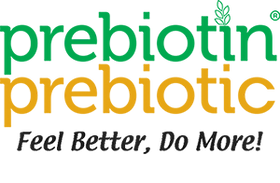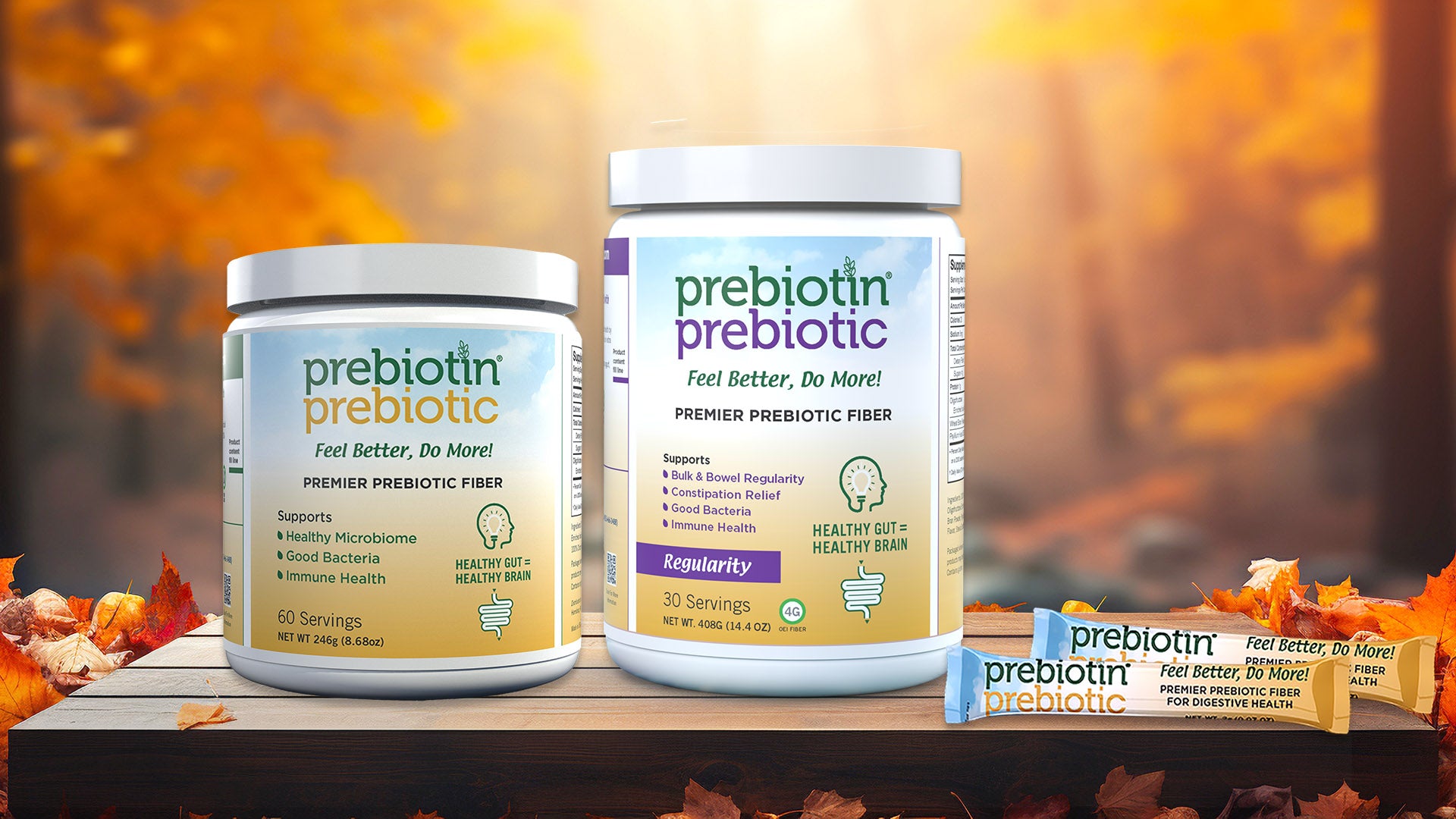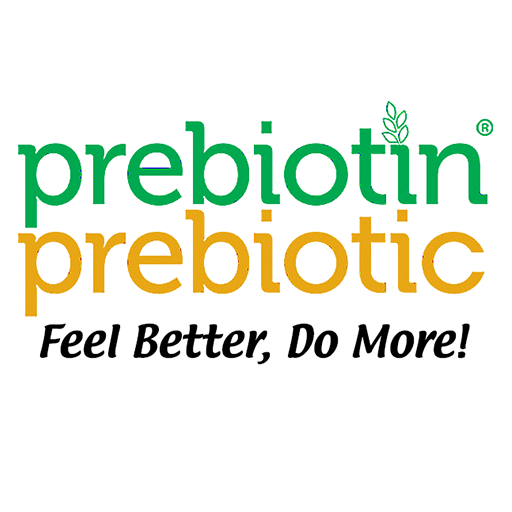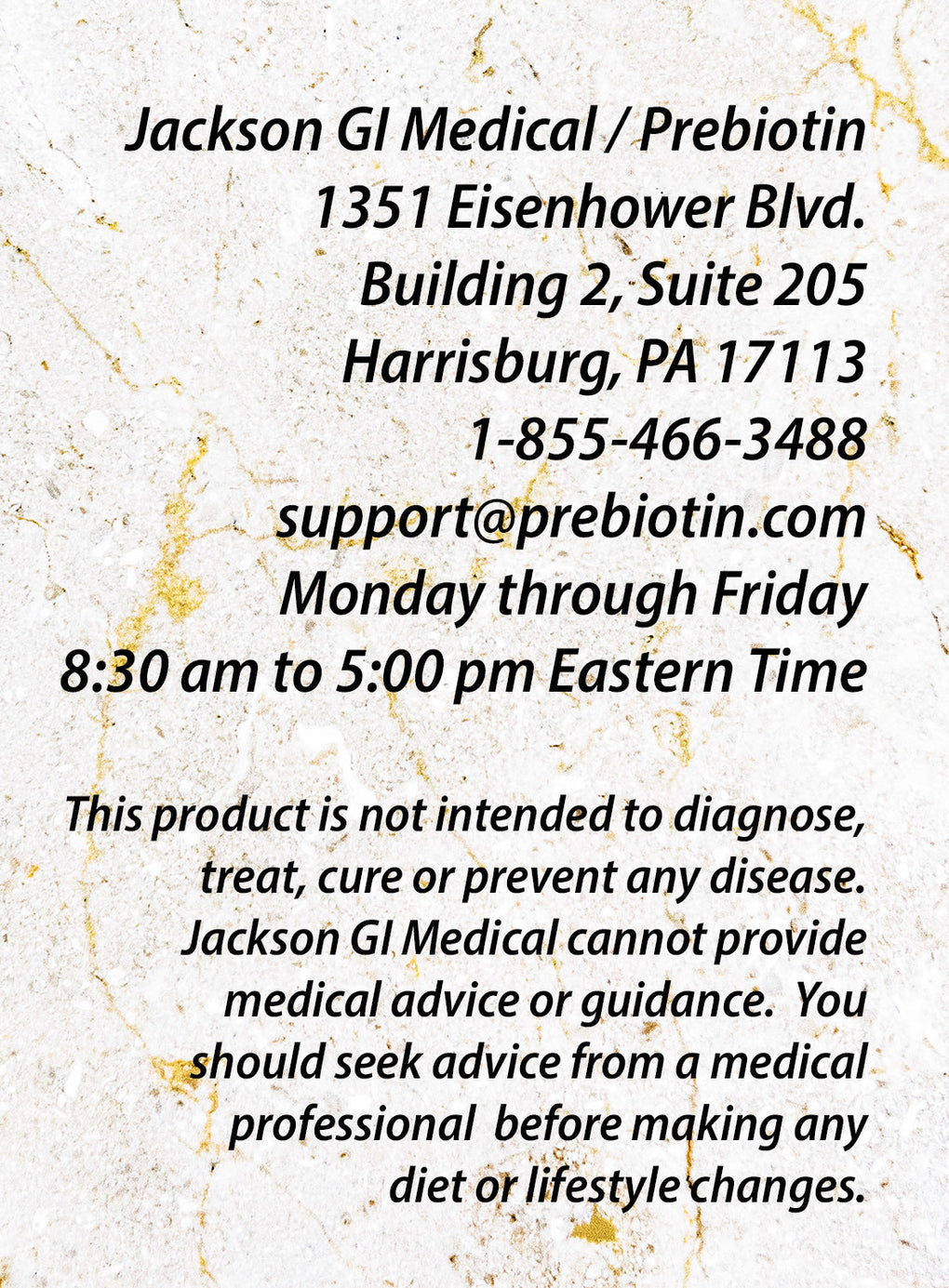Product Overview
The Benefits of Taking Prebiotin® Daily
Consuming high fiber foods and prebiotic supplements provides the body with a diverse range of health benefits, but not every high fiber food or supplement is created equal. To get the best possible benefit from a high fiber diet, we must eat both complex and simple soluble fibers that fertilize the beneficial bacteria that live in the entire length of the colon.
The oligofructose-enriched inulin (OEI) in Prebiotin® Prebiotic Fiber gives the beneficial bacteria the nutrition necessary to flourish. Unlike most prebiotic supplements, Prebiotin is 100% plant-based and is the only true full-spectrum prebiotic solution available today.
Prebiotin is derived solely from the chicory root with a hot water extraction technique, rather than with chemicals. It is fat-free, cholesterol-free, sodium-free, gluten-free, low in carbohydrates, and uses the FDA’s Good Manufacturing Practice (GMP) standards. Prebiotin is also nut- and dairy-free and is suitable for infant nutrition, as well as for those on vegetarian and vegan diets.
The benefits of prebiotics and probiotics would not have the credibility they do now without the extensive medical research that has occurred over the past 20 years. Indeed, it is precisely these well-documented articles in the medical literature that demonstrated the health benefits of prebiotics and encouraged Jackson GI Medical to come into this groundbreaking field.
The Prebiotin Advantage
The Prebiotin® family of nutritional supplements are all-natural plant-based, full-spectrum prebiotic fiber supplements. The prebiotic fibers in Prebiotin, Oligofructose-Enriched-Inulin, or OEI, are proven to stimulate good bacteria growth throughout the entire colon, thus optimizing the prebiotic benefits you can realize by taking it daily.
What Makes Prebiotin Different?
The Prebiotin formula provides generous portions of both oligofructose and inulin derived from the chicory root, one of the riches sources of prebiotic fiber. The combination of both, called OEI, seems to provide a synergy whereby the mixture of the two has been found to be more effective in producing beneficial results—nourishing desirable gut bacteria—than either type of fiber by itself.
How both oligofructose and inulin work in the colon
 Oligofructose (FOS) is a simple carbohydrate and soluble fiber with a short, small molecule. When it enters the colon in the right lower side of the abdomen down by the
Oligofructose (FOS) is a simple carbohydrate and soluble fiber with a short, small molecule. When it enters the colon in the right lower side of the abdomen down by the
appendix, it is immediately fermented almost completely in the large intestine where it nourishes desirable bacteria.
Inulin, on the other hand, is a complex soluble fiber with more complex molecules. Because it takes the colon’s bacteria much longer to ferment inulin, there is more available to the bacteria that reside in the rest of the colon, mostly on the left side.
Together, inulin and oligofructose fertilize bifidobacteria and lactobacilli and the numerous other beneficial bacterial strains that live throughout the colon.
How do we know this?
It is really very simple. After taking inulin, scientists measure the acidity in the left colon and find more of it. More important than this, a person can take Prebiotin and find that the malodorous smell of flatus clears, not the amount of flatus, but just the noxious smell. The reason for this is that the bacteria species that make these smelly sulfide gases need a neutral environment. When it becomes acidic from Prebiotin, these bacteria do not grow. When flatus smell clears, the person knows that this healthy acidic action is occurring in the left colon.
The bottom line is that the Prebiotin formula has significant amounts of both oligofructose and of inulin. You get positive bacterial action throughout the colon. It is why we call this product a full-spectrum prebiotic formula. It is why medical researchers have overwhelmingly chosen this formula for their research. Products with just FOS or inulin only give your colon half of what it really needs.
Just remember, prebiotics are not probiotics. To learn more about the differences between the two, visit our prebiotics vs probiotics resource.
How to Take Prebiotin
What is the best way to take Prebiotin® Prebiotic Fiber and when should I take it?
Instructions are on your container, but here are some tips:
- Mix Prebiotin® Prebiotic Fiber (or our Weight Management Prebiotin® Prebiotic Fiber) with your food, coffee, water, or a smoothie. Really, the options are limited only to what you like best; it works with everything!
- Begin by taking 1/2 of either a scoop or stick pack in the morning for a few days to a week (a full scoop = 4 grams; sticks come in 2- and 4-gram sizes). Build up slowly.
- Note: The formulas for Regularity and Heart Health, are best mixed with food or blended in a smoothie.
- Then, begin adding the second scoop or stick in the late afternoon or evening. It helps to be consistent when you take it.
- Your goal is to reach a total of at least 8 grams (two 4-gram scoops or two 4-gram sticks) per day of Prebiotin to feed your beneficial gut bacteria.
- For children, it is best to start with very small amounts (1/4 of a teaspoon) and build up the daily dose slowly based on the age and weight of the child. It is always helpful to discuss Prebiotin and all supplements with your child’s pediatrician.
- As a food product, Prebiotin can be taken with a probiotic or any other supplement.
“GRAS” designation from the FDA
Prebiotin oligofructose-enriched inulin is derived from pure chicory root, a food consumed for thousands of years. It has been designated Generally Recognized As Safe (GRAS) by the FDA, which allows its use in food and beverages, including infant formula.
It is regularly used in 10 to 16-gram amounts for clinical studies. We recommend staying within a maximum of 8-16 grams daily. Make sure to drink adequate water.
What to Expect When Taking Prebiotin
Depending on what the initial symptoms are, one could expect an improvement in 1-2 weeks. Of course, the true benefit of prebiotic supplementation is the long-term health benefits derived from a balanced and well-nourished colon.
Increased Sense of Well Being
There are some people who will get a surprisingly rapid improvement in their sense of well-being, with decreased appetite and an improved bowel pattern. However, because Prebiotin prebiotic fiber addresses the underlying cause of health complaints by improving the mix of bacteria in the colon, it may take two to six months to notice a change in health and well-being.
Managing Flatus with Prebiotic Supplements
Some people experience excess gas or flatus initially. To avoid this, it is best to start taking a small amount daily (for example, a ½ or even a ¼ of a scoop or fiber stick per day for the first week), then slowly to build up to the desired amount.
At a certain level, many people will notice that their intestinal gas no longer has an unpleasant odor. This is because acidity has increased in the colon, and the bacteria that make the smelly sulfide gases no longer grow.
Gas and Prebiotics
Malodorous flatus smell occurs from the production of sulfide gases (hydrogen sulfide). The bacteria that make this gas do not grow in an acid environment. Prebiotin beneficially acidifies the colon contents. When flatus no longer has a noxious smell, a good dose of Prebiotin has been reached. Continue Prebiotin at this dose level to optimize the prebiotic effect while managing flatus.






